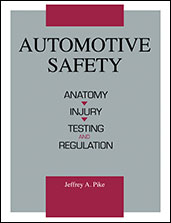Technical Paper
Application of the Adjoint Method for Vehicle Aerodynamic Optimization
2016-04-05
2016-01-1615
The aerodynamic optimization of an AUDI Q5 vehicle is presented using the continuous adjoint approach within the OpenFOAM framework. All calculations are performed on an unstructured automatically generated mesh. The primal flow, which serves as input for the adjoint method, is calculated using the standard CFD process at AUDI. It is based on DES calculations using a Spalart-Allmaras turbulence model. The transient results of the primal solution are time averaged and fed to a stationary adjoint solver using a frozen turbulence assumption. From the adjoint model, drag sensitivity maps are computed and measures for drag reduction are derived. The predicted measures are compared to CFD simulations and to wind tunnel experiments at 1:4 model scale. In this context, general challenges, such as convergence and accuracy of the adjoint method are discussed and best practice guidelines are demonstrated.


